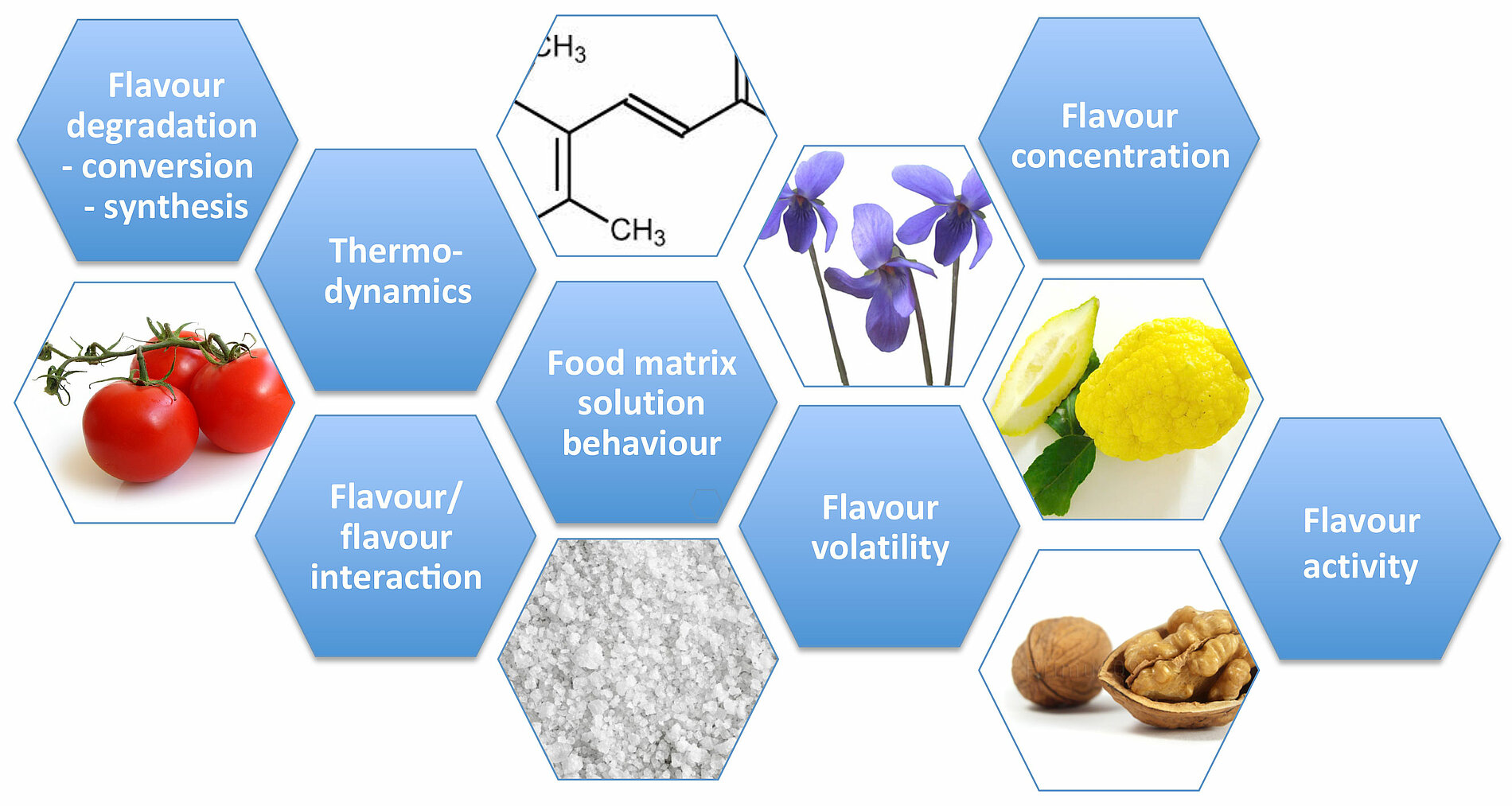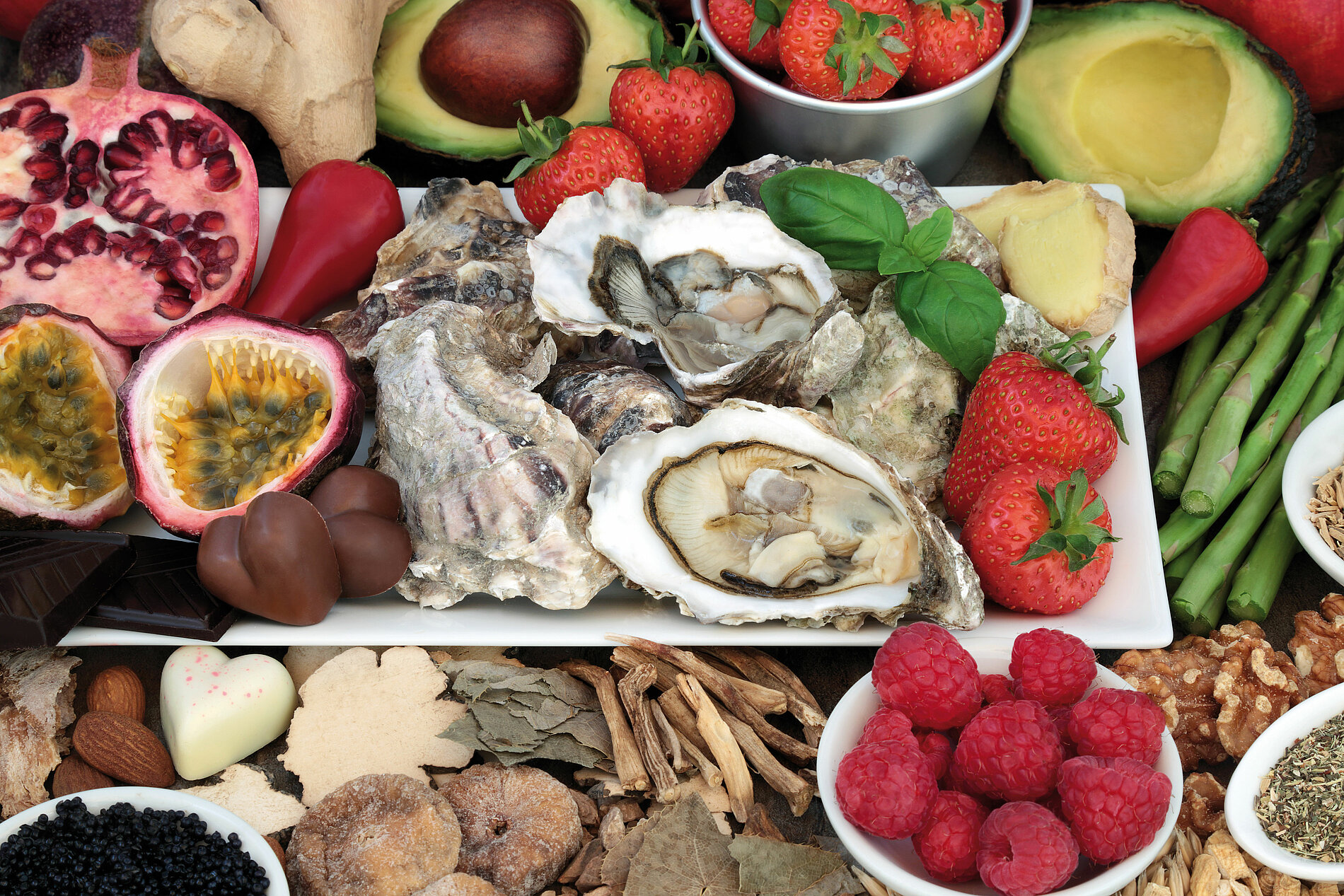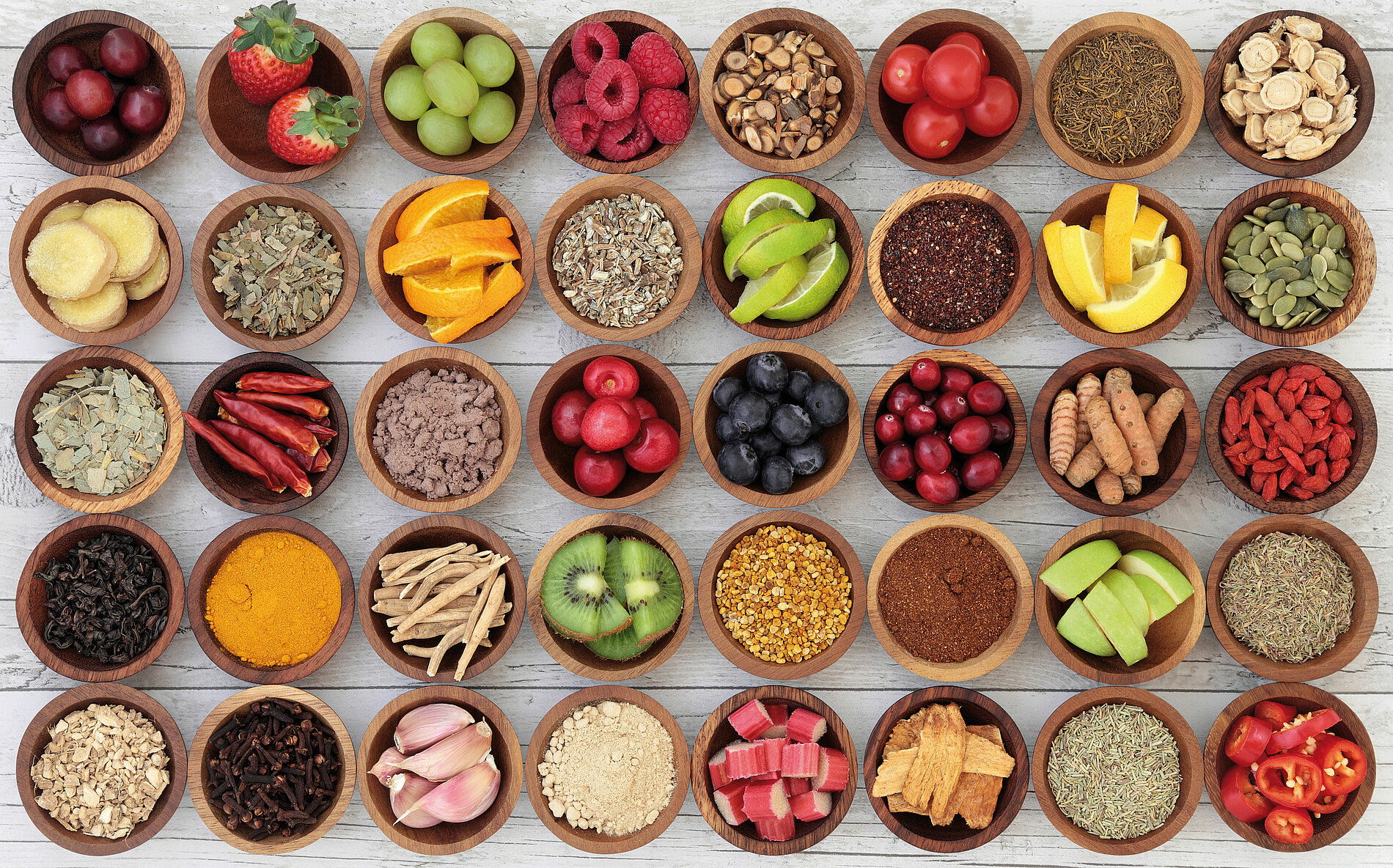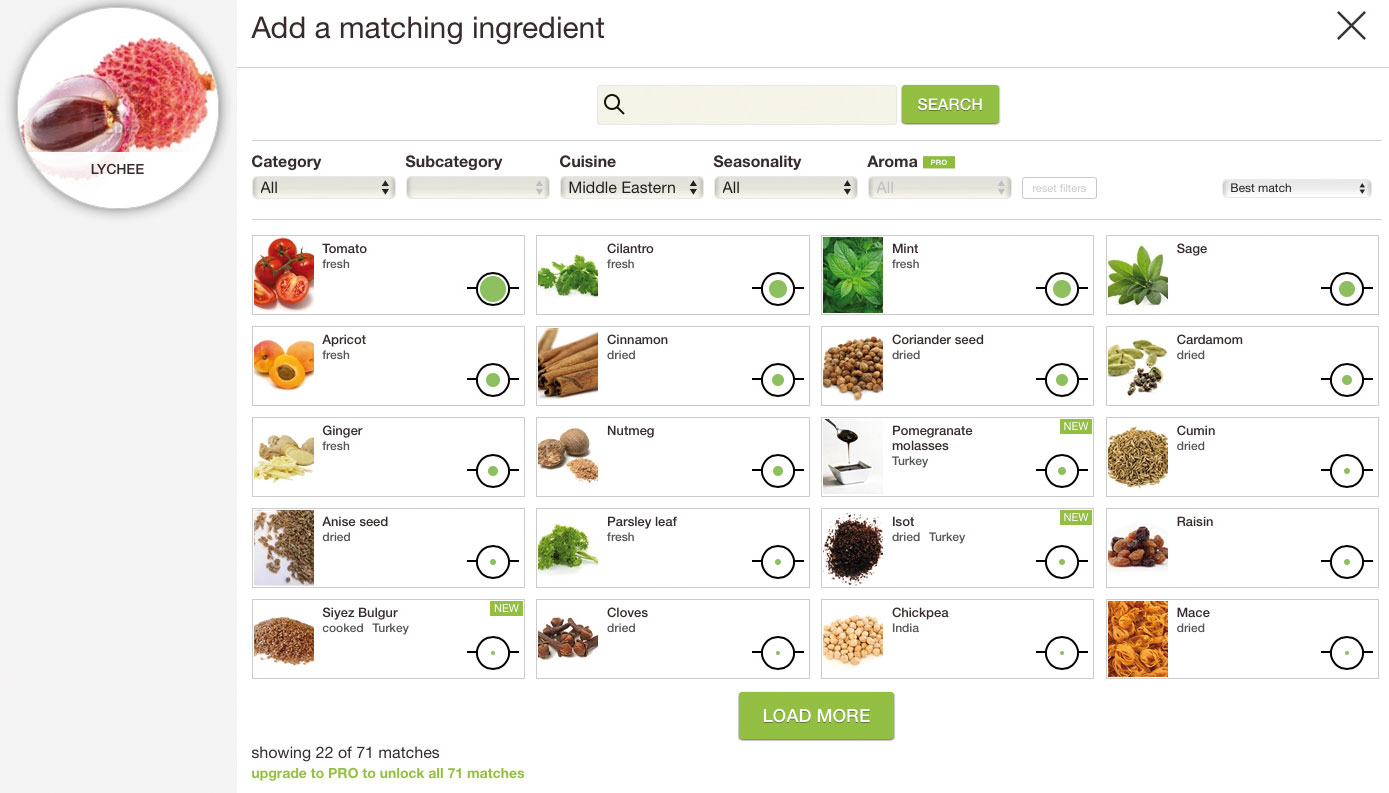Food Pairing & Sensory Analysis – Boundless fascination?
DLG Expert report 6-2017
Author:
- Christine Brugger, Dipl. oec. troph., Scientific Consultant for Sensory Analysis, author and lecturer christine.brugger@aromareich.ch, www.aromareich.ch
Contact:
- Bianca Schneider-Häder, DLG Competence Center Food Business, B.Schneider@DLG.org
Topicality
The attention-grabbing combination “Caviar & white chocolate” by Heston Blumenthal will soon be two decades old. In the meantime top chefs and interested hobby cooks have experimented and applied the craft of food pairing, especially in the gastronomy sector. Food pairing is now experiencing new interest in a broader area. What chances does food pairing offer in conventional or innovative product development?
The use of ingredients and foods in recipes has changed in recent years. Following a trend towards naturalness or regionalism, people are reverting more to regional and seasonal products and using resources more consciously. Old varieties and plant parts which have so far been neglected are being newly discovered and now form the heart of innovative top cuisine, the recipes for which are being newly structured. The production conditions, modified from a health perspective, are presenting the food industry with new challenges regarding salt, fat and sugar reduction and the masking of undesirable flavours or bitterness.
On the consumer side, conscious eating and the associated enjoyment have reached a broader target group. The focus is more on sensory experience, and unusual combinations of ingredients that lead to a harmonious result are in line with today’s spirit of the times.
Many cooks possess an often large wealth of experience in food pairing, generally acquired experimentally. However, scientific literature on the subject is very limited. This is surprising when one considers what scientific and also economic progress well-founded analyses would facilitate, leading to better understanding of food pairing. New studies that involve psychophysical, physiochemical and neuroscientific parameters can thus advance the fascinating application of food pairing in product development as well. The following pages illuminate the backgrounds, aids, influencing factors and opportunities of food pairing.
Background, concept and development of food pairing
The definition of food pairing is based on the widespread hypothesis that the more shared flavour components different foods display, the better they match. The effect is stronger when the shared flavour components also make up the respective principal sensory components, in other words the key flavours. If the overlapping of flavour substances in two foods is over-proportionately high, these can be substituted for each other in their use (for example cucumber and water melon with the shared component Nona-2.6-dienal). Successful food pairing is displayed when the (sensory) experience of the flavour combination is greater than the sum of the individual components, in other words when it has a synergistic effect – according to the theory.
„Harmony“ versus „Contrast“
In line with the traditional hypothesis, applications mainly target the “harmony” pairing concept, in which an optimal pairing result is achieved by the highest possible overlap of the same flavour components.
According to a more recent study, however, this is regionally specific and depends on the cultural circle. Ahn et al. conducted research into the topic of “flavour networks” in over 50,000 recipes and analysed them on the basis of their ingredients and flavour combinations. In North American and West European cuisine, a significant trend towards recipes with ingredients displaying shared flavour components was evident. By contrast, in East Asian and South-East European recipes there was a significant trend towards recipes in which ingredients contrasted, in other words did not display any overlapping flavour components. This is also known as “negative” food pairing.
One possible explanation for this is to be found in the culture-based development of the recipes. In the Indian cultural circle, for example, recipes have not only evolved with the goal of tastiness. The use of spices in particular (alongside their function as flavourings, colorants or conservation agents) was intended to protect users against illnesses. The spices that possessed this microbial function did not have any overlapping flavours.
However a more precise analysis shows that the “contrasting” or negative food pairing approach in the East Asian recipes depends on the recipe categories used. A comparison of the food categories shows that combinations of fruits or vegetables are more likely to display positive food pairing through the use of overlapping ingredients than in the case of the food categories spices or dairy products.
The phenomenon of sensory specific saturation (SSS) also advocates the use not only of harmonious but also of contrasting elements in the coupling of ingredients. When combining the flavours of two products, that admittedly overlap strongly, but are not very complex in sensory terms, sensory-specific saturation during eating could lead to rising rejection of the product, as the experience is too one-dimensional. For example in the combination of lavender and coriander seeds – and “linalool” as common key flavour components.
The following sources of information serve to develop food pairing concepts and as a basis for food pairing experiments, and at the same time they can offer valuable practical support:
VCF – Volatile Compounds in Food (www.vcf-online.nl)
The database contains volatile flavour components for foods and lists these with minimum and maximum concentrations. It allows users to search directly for individual ingredients, their threshold levels and occurrence in foods. By using the comparison function it is possible to display the overlapping volatile ingredients for two foods at a time in the database (see Figure 2):
By comparison with “flavour pairing”, the food pairing approach is multisensory in nature. The concept of food pairing covers not only key flavours as a basis for the combination, but also includes the further profiles of taste, texture and mouthfeel, as well as trigeminally active effects. For reasons of complexity, however, only the combination in the flavour sector is discussed here.
Although food pairing became popular as a result of Heston Blumenthal’s combination, the empirical form of food pairing has existed for a long time. Chefs and barkeepers especially like to experiment (possibly without being aware of food pairing) in order to develop creative new recipes, or they may develop new combinations by necessity – e.g. in order to process surplus amounts of a specific food.
With over 8000 flavour ingredients provided with FEMA/GRAS numbers, the VCF database is suitable for users with knowledge of flavour chemistry. FEMA is the Flavor and Extract Manufacturers Association of the United States (FEMA), which has been dealing with a programme for examining and assuring the safety and the “GRAS” status (generally recognized as safe status of flavour ingredients) already since 1959. The FEMA GRAS™ programme has been the longest-running and best-known programme ever since.
https://www.femaflavor.org/gras
FOODPAIRING® Software (https://www.foodpairing.com)
Furthermore, there is a “FOODPAIRING®” software that does not require any specific prior knowledge from users and can offer a certain degree of support in conceptual design.
According to the provider, the pairing proposals of the software – which addresses chefs, bartenders and hobby cooks – are calculated via algorithms. The selection of a basic ingredient generates proposals for possible combinations (see Figure 3). The recommendations are numerous, but shown purely qualitatively in the form of “Best Match”, “Good Match” or “Match”. By contrast with “Volatile compounds in Food”, the overlapping flavour components are not named, nor is the share of overlap specified in more detail. FOODPAIRING® is suitable as a source of inspiration because it shows not only individual matching foods with overlap, but also an extensive range of products that can be called up seasonally, on the basis of different national cuisines and flavours.

When it comes to substituting raw materials, e.g. in the field of product renovations or reformulations of recipes, the “Best Match” results of FOODPAIRING® provide a selection for further experimenting. In the VCF database this is done by searching for key flavours within the source product for which further representatives are being sought in the database. The overlapping flavour substances are displayed with the help of the comparison function.
Foods with ingredients that display a very high degree of overlap can allow successful substitution, provided that they behave similarly e.g. with regard to solution behaviour or flavour activity.
However, neither FOODPAIRING® nor VCF supply information regarding the mixing ratios that result in successful combinations of the corresponding ingredients. Notes on quantity data and threshold levels within various matrices would be very helpful, as they are crucial for the success of the Food Pairing combination. In this connection it is therefore necessary to experiment individually.
Complexity, influencing factors and sensory interactions
Complex influencing factors and interactions from the theoretical pairing combinations up to their sensory perception must be observed. A few parameters are examined in greater detail here (see Figure 4).

Flavour degradation, conversion and synthesis: The quality and ripeness condition of a product are significant, because a food is seldom static from the flavour aspect. This can be illustrated with the example of a banana. At ripeness stage 1 (green colour, source: Chiquita colour chart) cis-3-hexenol (green-grassy) is the dominant flavour component. At ripeness stage 3-4 (more yellow than green in colour) hexanal (green) and eugenol (clove-like) are responsible for the essential flavour, while in ripe to overripe stage 7 (completely yellow colour with brown spots) various esters (amyl, butyl/ripe fruity to solvent-like) are the main sensory contributors. Accordingly a wide range of different flavours can exist within a product. Further examples of changes in flavour composition within the product are fermentation, ripening and drying processes or Maillard reactions.
Flavour level – concentration of the flavour components with regard to the perception threshold: The flavour activity is not determined exclusively by a high concentration of the flavour components. Even a low concentration of one flavour component can be active or dominant in sensory terms in a product. The flavour level represents the ratio of the concentration to the respective perception threshold. However, to determine the flavour level the threshold levels in the respective solvent or the respective food matrix must be known.
Food matrix solution behaviour: The release of the (volatile) flavours takes place depending on the culinary processing (e.g. physical cell breakdown by cutting), the application of temperature and its influence on the volatility and the solution behaviour (hydrophilic or hydrophobic properties of the flavour components) within the food matrix.
Conditioning: The food pairing theory assumes an „innate“ natural „match“. Some successful flavour combinations such as e.g. tomato and cinnamon do not match from the point of view of food pairing. And yet they may be popular among consumers, as the classic Greek combination of the two products has shown, as here the positive impression occurs in the culinary culture. In addition to these external factors, further, individually varying influences on sensory perception must be taken into account.
Dynamics of chewing, saliva production and retronasal perception in the palate: The breakdown of the food matrix and the solubility and perception of the flavours differ individually and depend for example on chewing behaviour, the movement of the food in the mouth, the air circulation and the associated retronasal transport of the flavour molecules to the olfactory mucosa.
Practical considerations
The influencing factors and interactions are diverse and complex. Without any flavour-chemical background, in practice comprehensive and successful food pairing is likely to be difficult to implement on the basis of databases and supporting software and only be achieved by conducting a large number of practical experiments.
Furthermore, implementation of the theory in practice also requires a few essential considerations in advance. In order to make the sensory experience and perception of the effects promising, it is necessary to consider the sensory structuring already in advance.
For this and to simplify the further experimental procedure, it would be a good idea to produce classic sensory flavour profiles in order to determine the components which are active in the sensory experience and to register their intensities, since as explained above, no threshold levels and intensities are stated for instance in the FOODPAIRING ® software. Accordingly with the aid of a consensus profile the main flavouring components can be determined with relatively little outlay and thus create the foundation for further considerations listed below:
- Select foods with overlapping flavour components from the Volatile Compound of Foods Database or FOODPAIRING® software
- Conduct a sensory analysis of the main components
- Perform sensory structuring by allocating the products to flavour families on the basis of their main components
- Select products with overlapping flavour components and draw up a complete sensory profile
- Display the profile and identify any lacking flavouring dimensions
- Select ingredients from the flavour families that in additional exhibit contrasting flavour families.
Following this structuring, the basic ingredients or the basic pairing partners are established, so that they can now be supplemented with the further profiles of taste, texture, and possibly trigeminal effects and finally generate a complex sensory experience.
The sensory-based approach is particularly important when no data is available on new innovative products, specific varieties of a product, or new (old or more likely traditional) products such as e.g. dahlia bulbs, carrot greens or kale roots, but these are to be used innovatively.
Chances and limitations
The application of food pairing offers potential in the following areas:
Substitution of raw materials
Food pairing is basically suitable as a starting point for flavour substitution. To exchange flavour components in the substitution of flavouring substances, it must, however, be remembered that there are no completely overlapping matching partners.
Masking of undesired stimuli/off-flavours
The masking of taste components with an aversive effect such as astringency or bitterness is a further field of application for food pairing. By using flavour components that are conditioned “sweet” in perception, such as for example vanilla or anise, it is possible to mask bitterness. Food pairing also displays great potential in masking undesired flavours. To achieve successful masking and the associated suppression of an undesired flavour, special attention must be paid in particular to the flavour activity, volatility and solution behaviour of the food pairing partners used.
Sugar reduction
Flavour compositions that are conditioned by a taste property such as “sweetness” can be involved in the development of sugar-reduced products. By using ingredients with a pronounced vanillin or anethole content, or for example berry or fruit-type ingredients, it is possible for instance to adapt the sugar input.
Innovation / product development
In product development a multi-sensory approach aiming to develop a long-lasting sensory experience can be supported by the use of food pairing. Using not only harmonious but also contrasting flavour components can avoid sensory adaptation on consumption of the product. The use of contrasting elements that supplement the product with additional flavour dimensions generally intensifies the sensory perception, as the sensory aspects of the product become richer and more complex in profile. In this connection focusing on consumption and target-group orientation are important. While unusual product combinations can be surprising and exciting during a single sensory experience, in conventional product development repeat purchases are an important criterion. Products with exceptionally intensive, complex and long-lasting sensory experiences are not necessarily suitable for triggering frequent repeat purchases.
Prediction
The large number of influencing factors makes predictions difficult. Alongside the interactions listed and the external and internal influencing factors, for example non-linear functions of the flavour combination also make it difficult to predict the effects of food pairing.
Prospects
The fascinating field of food pairing offers great potential, especially also in the service of the food industry as well. However, the limited studies and data available mean that food pairing is above all still an experimental area. Hypothetical food pairing must be supplemented by practical experiments as regards the prevailing influence factors and interactions, as predictions regarding the success of flavour combinations are difficult. In particular the linking of different parameters from the disciplines of flavour chemistry, gastrophysics and neuroscience would support the broader use of food pairing and contribute to realising the potential that food pairing offers.
References
- Ahn, Y-Y. et al. (2011) Flavor network and the principles of food pairing. Sci. Rep. 1, 19 DOI:10.1038/ srep001196
- De Klepper, M. (2011) Food Pairing Theory – a European Fad. Gastronomica: The Journal of Food and Culture, Volume 11 (4) – Nov 1
- Kort, M. et al (2010) Food pairing from the perspective of the ‘volatile compounds in food’ database.
Expression of Multidisciplinary Flavour Science: Proceedings of the 12th Weurman Symposium, Interlaken, Switzerland
- Møller, P. (2013) Gastrophysics in the brain and body. Flavour 2:8 DOI: 10.1186/2044-7248-2-8
- Jain, A., N K, R., & Bagler, G. (2015). Analysis of Food Pairing in Regional Cuisines of India. PLoS ONE, 10(10)
Contact:
Bianca Schneider-Häder, DLG Competence Center Food Business, B.Schneider@DLG.org




